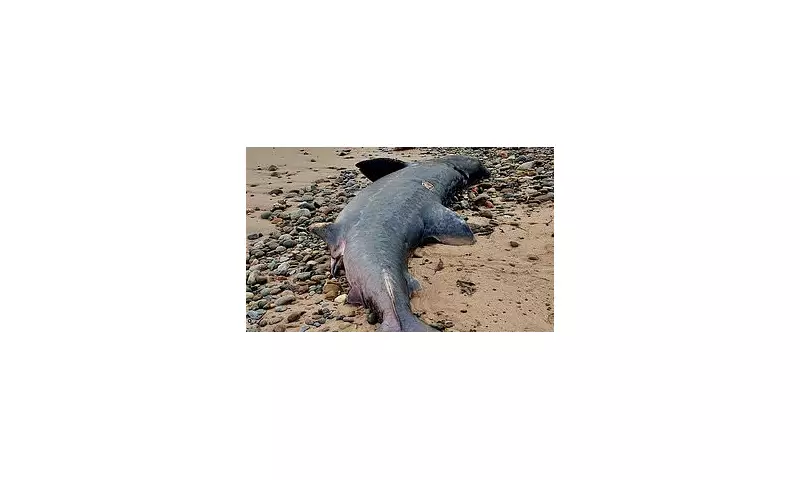
A remarkable marine discovery has captivated both scientists and locals along the Scottish coastline after a colossal 20-foot basking shark washed ashore near the historic city of Inverness.
The enormous creature was discovered on a beach in Ardersier, approximately 15 miles northeast of Inverness, creating both a spectacle and a scientific opportunity for marine researchers. Measuring an impressive six metres in length, the shark represents one of the ocean's most magnificent filter-feeding giants.
Scientific Investigation Underway
Marine experts have been quick to examine the rare specimen, with the Scottish Marine Animal Stranding Scheme (SMASS) documenting the find. This represents a significant opportunity for research, as basking shark strandings remain relatively uncommon occurrences in Scottish waters.
"These events, while unfortunate, provide invaluable insights into the health and behaviour of these mysterious creatures," explained a marine biologist familiar with the case. "Each stranding helps us understand more about their migration patterns, diet, and overall population health."
Understanding the Gentle Giants
Basking sharks, despite their imposing size, are completely harmless to humans. As the second-largest fish species in the world after whale sharks, they feed exclusively on plankton, filtering vast quantities of water through their enormous gaping mouths.
Key facts about basking sharks:
- They can grow up to 12 metres (39 feet) in length
- They're seasonal visitors to British coastal waters
- They're a protected species in UK waters
- Despite their size, they're excellent swimmers
Conservation Significance
The stranding comes at a time when marine conservation efforts are increasingly important. Basking sharks were once heavily hunted for their liver oil and fins, leading to significant population declines. Today, they enjoy protected status, making each sighting—even a tragic one like this—valuable for ongoing conservation work.
Local authorities are now working to determine the most appropriate way to handle the remains, balancing scientific interest with environmental considerations.





